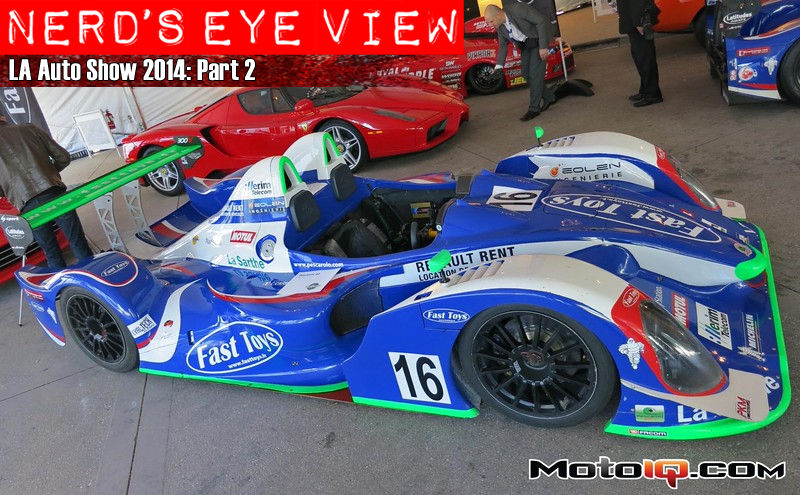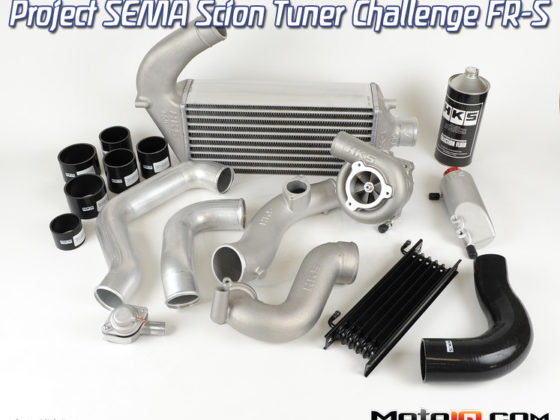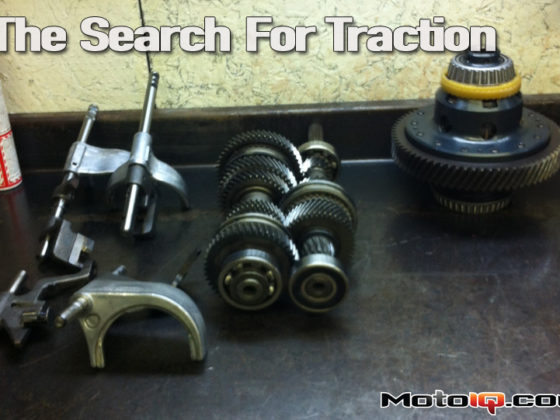,
 This is part of the Toyota fuel cell system. Toyota appears to have taken the approach of modifying one of their hybrid systems as the front half consists of the electric motor and power control unit; so not dissimilar to their gasoline hybrid systems, but with the gas engine removed. Notice there is still a stack of heat exchangers up front along with one in front of the left front tire. The electronics and fuel cell system still require thermal management. Of course, the thing still has air conditioning, so an A/C condenser is still required.
This is part of the Toyota fuel cell system. Toyota appears to have taken the approach of modifying one of their hybrid systems as the front half consists of the electric motor and power control unit; so not dissimilar to their gasoline hybrid systems, but with the gas engine removed. Notice there is still a stack of heat exchangers up front along with one in front of the left front tire. The electronics and fuel cell system still require thermal management. Of course, the thing still has air conditioning, so an A/C condenser is still required. Toyota placed the fuel cell stack (the large rectangular box in the middle) down low and in the middle of the chassis whereas Hyundai had placed their stack right above the electric motor up in the front of the chassis. At the front of the stack is a positive displacement blower (the smaller rectangular box that Toyota labeled ‘fuel cell boost converter’). Fuel cell stacks are like internal combustion engines when it comes to forced induction; if you pressurize the air, you increase the power density and get more power out of the same size package. The downside in using forced induction with a fuel cell stack is the compressor requires power to spin, so it’s a parasitic loss on the fuel cell system. In the case of an automotive application where space and weight come at a premium, the greater power density achieved is more important than the loss in efficiency. The cream colored cylinder is the high pressure hydrogen tank. They are typically made of carbon fiber and Kevlar to be as light and strong as possible. The tanks need to be strong as they typically store the hydrogen at 10,000psi. That last rectangular box at the back is the battery pack which helps during startup, power transients, and recapturing energy during braking.
Toyota placed the fuel cell stack (the large rectangular box in the middle) down low and in the middle of the chassis whereas Hyundai had placed their stack right above the electric motor up in the front of the chassis. At the front of the stack is a positive displacement blower (the smaller rectangular box that Toyota labeled ‘fuel cell boost converter’). Fuel cell stacks are like internal combustion engines when it comes to forced induction; if you pressurize the air, you increase the power density and get more power out of the same size package. The downside in using forced induction with a fuel cell stack is the compressor requires power to spin, so it’s a parasitic loss on the fuel cell system. In the case of an automotive application where space and weight come at a premium, the greater power density achieved is more important than the loss in efficiency. The cream colored cylinder is the high pressure hydrogen tank. They are typically made of carbon fiber and Kevlar to be as light and strong as possible. The tanks need to be strong as they typically store the hydrogen at 10,000psi. That last rectangular box at the back is the battery pack which helps during startup, power transients, and recapturing energy during braking. She’s an oldie, but she’s a goodie! The IMSA GTP Eagle Mark III dominated GTP racing back in the day after a stint of domination by Nissan. 750hp and 1830lbs makes for a pretty good power-to-weight ratio.
She’s an oldie, but she’s a goodie! The IMSA GTP Eagle Mark III dominated GTP racing back in the day after a stint of domination by Nissan. 750hp and 1830lbs makes for a pretty good power-to-weight ratio.

Looking underneath the front body work, you can see how the air is channelled up and out behind the front wheel.



